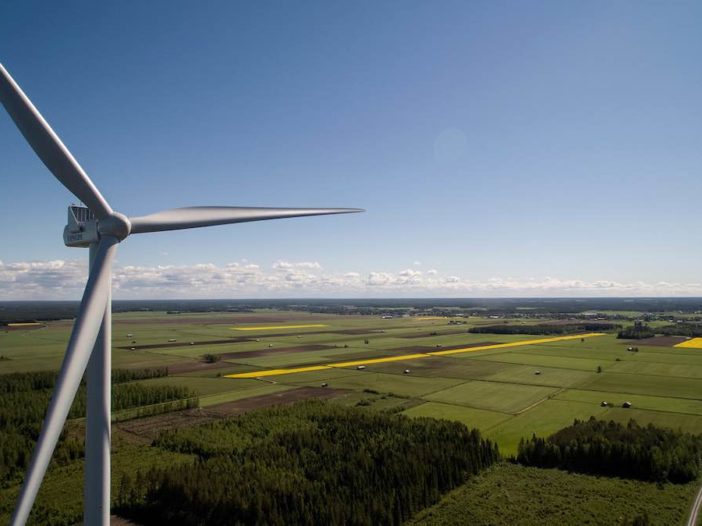“A packet of poo tickets:” Barnaby’s beef with wind power goes nuclear
National Party MP Barnaby Joyce has launched an extraordinary attack on a wind farm proposed for development near Walcha in his seat of New England, calling the Environmental Impact Statement for the project a “packet of poo tickets.”
Speaking at a public meeting hosted by local anti-wind group Voice for Walcha last week, Joyce also called on opponents of the Winterbourne wind farm to take their fight against the project to the national capital.
“You’ve got to arrive in Canberra on the Federation Lawn at Parliament House. You know, it really scares politicians,” the former deputy PM told the meeting at the Walcha Bowls Club.
Nuclear power, he seems to think, would be a better fit for the region.
“Rolls Royce is developing [a small modular nuclear reactor] for the city of Leeds to come online 2029,” Joyce told the meeting, according to the New England Times.
“It is 16.4 meters high and 4 meters wide. And Leeds has 503,000 people. So something 16.4 meters high, and 4 meters wide is going to do one and a half Canberras.”
The 700MW Winterbourne wind farm was originally proposed by Walcha Energy – a joint venture between Mirus Energy and Energy Estate – until it was bought up by global turbine giant Vestas in 2019.
In late 2021, a fund managed by Copenhagen Infrastructure Partners acquired Vestas’ shareholding and the two Danish companies – with Vestas still leading construction – hope to begin works on the 119 turbine project in 2024, pending development approval.
But development approval could now face delays, after the public exhibition of the Environmental Impact Statement for the project – which closed last week – attracted more than 800 submissions, triggering automatic referral to the Independent Planning Commission.
And while the NSW planning portal shows that a clear majority of public submissions (433) are in support of the wind farm, the discovery of some errors in the original EIS has dominated local news reports, boosted by Barnaby’s toilet paper-themed rhetoric.
Vestas says the mistakes – “typographical errors, and inconsistency of terminology” – were amended after an erratum was submitted to the NSW Department of Planning and Environment, which itself had deemed the EIS acceptable for public exhibition.
Vestas also told RenewEconomy it welcomes feedback about the wind farm, and will now prepare a Submissions Report to respond to the objections and comments provided through the EIS process.
Push-back against wind generation projects is nothing new in Australia – nor in any other part of the world, for that matter – particularly for projects the size of the Winterbourne wind farm.
Complaints – as a glance through the submissions will quickly reveal – include entirely reasonable concerns about environment, local flora and fauna and impacts on nearby residents and businesses, all of which the EIS should seek to address.
But the lack of political support for the project, which also promises a Community Benefit Fund that will return more than $35 million to the local community over the expected project life, is more difficult to reckon with.
A Vestas spokesperson says the Winterbourne wind farm will offer one of the largest Community Benefit Funds of any renewable energy project in Australia, including a $1 million contribution at financial commitment of the project, and $750,000 per year (indexed to CPI) of operation (based on a 600 MW project being delivered; for every 1 MW above this capacity, we will contribute an additional $1,000 per year to the fund).
“It is the intention that this fund will be managed by Walcha Council and Uralla Council, and will support local community initiatives, programs, events, facilities, services, infrastructure and businesses,” the spokesperson told RenewEconomy.
More broadly, Vestas says the Winterbourne wind farm is expected to generate more than $150 million in direct wages and profits, and more than $160 million in indirect wages and profits, per year of construction.
During project operations, the project is expected to generate around $25 million per year in direct and indirect economic benefit for the local region. Over the course of construction it will create an estimated 400 jobs.
Beyond this, it offers a critical contribution to the NSW Coalition government’s net-zero emissions target by 2050 and a big chunk of new generation required as coal-fired power stations exit the state’s grid.
The New England region has been declared as one of five designated Renewable Energy Zones (REZs) in NSW, due to its proximity to existing energy infrastructure and abundant natural clean energy resources.
Claims that the developers of the project have not consulted broadly enough with the local community are also disputed by Vestas, which says it has secured the endorsement of 55 landowners for the wind farm.
“We have provided quarterly project updates via post or the local paper since March 2020 (11 in total),” a company spokesperson says.
“We have engaged directly with project neighbors and with the local councils and agency stakeholders. We have a project website with considerable material available for download, have a direct email for feedback and enquiries, and maintain social media platforms.
“We established a Community Consultative Committee which held seven meetings since March 2021. We have a local office which is currently staffed three days per week.
“We have logged more than 1,700 stakeholder interactions on this project, and we will continue our commitment to community engagement as the project moves forward.”
So what’s got Barnaby so worked up?
Vestas says it’s keen to meet with Joyce and talk through his – and his constituents’ – concerns.
“Vestas representatives were scheduled to meet with Mr Joyce in December 2022 and provide a briefing on the community consultation, benefits and scope of the project,” a company spokesperson told RenewEconomy.
“The meeting did not go ahead and Vestas awaits the rescheduled meeting.”




Comments are closed.